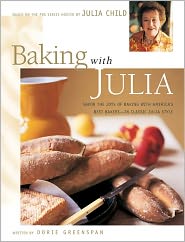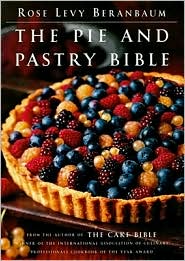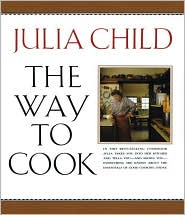Recipe of the Day Categories:
 Recipe Home
Recipe Home
 Recipe Index
Recipe Index
 Recipe Search
Recipe Search
 Appetizers
Appetizers
 Beef
Beef
 Beverage
Beverage
 Bread
Bread
 Breakfast
Breakfast
 Cake
Cake
 Chocolate
Chocolate
 Cookies
Cookies
 Fish
Fish
 Fruit
Fruit
 Main
Dish
Main
Dish
 Pasta
Pasta
 Pies
Pies
 Pork
Pork
 Poultry
Poultry
 Salad
Salad
 Seafood
Seafood
 Side
Dish
Side
Dish
 Soup
Soup
 Vegetable
Vegetable
 Surprise!
Surprise!
![[Flag Campaign icon]](http://a1032.g.akamai.net/f/1032/81/30m/www.gamesville.lycos.com/art_gv/ribbon_small.gif)


Apple Pie
Art Print
Soulayrol,...
Buy at AllPosters.com
 
based on the PBS
series hosted by
Julia Child -
"A world class
course
in
baking"

Pumpkin Pie
William Brady
Buy This at Allposters.com

Apples in Red Bowl
Nicole Etienne
Buy This at Allposters.com
 
Pie and Pastry Bible

Pie Cherries on...
Wally Eberhart
Buy This at Allposters.com

Shop Barefoot
Contessa Pantry


Beurre Gautier
Giclee Print
Cappiello,...
Buy at AllPosters.com

Sur La Table
Special Offers

Long Night of Pie Dreaming
Anna Jaap
Buy This at Allposters.com

|
|
Your
patronage of our affiliate
partners supports this web site.
We thank you! In other words, please shop at LBC
Gift Galerie!

Warm Pie
Nicole Katano
Buy This at Allposters.com

La Belle Cuisine
"Cakes are fancy-ass, honey. Pie is
home."
- Idella Johnson, Veteran Pie Baker, as quoted in
Classic Home Desserts
by Richard Sax, Chapters Publishing Ltd, 1994
 
NEW!!!
Flakiest Pie Crust Ever!
Julia Child's Pastry Dough -
Pâte
Brisée
 
The Way to Cook
by Julia Child, 1994, Alfred A. Knopf
"B.T.F.P. – Before The
Food Processor – it was only the practiced cook who produced decent pastry
dough. And what a to-do it was: first making a fountain
of flour on a clean
board, the clearing of a space in its center for the butter and liquids, and
the working of them together with cool, deft fingers – all done by
that
practiced cook with an infuriatingly calm smile of superiority. Now, in less
than 5 minutes, that wonderful F.P. machine enables any one of us to make
perfect pastry dough every time. We are thus, with our own triumphant
smiles, instantly masters of the quiche, the tart, the turnover, countless
hors d’oeuvre niblets, to say nothing of the chicken pot pie."
A Note on
Flour and Tender Pastry Crusts
Low-gluten pastry flour [such as White Lily], the kind you find in
biscuit-
making Southern states or in some health-food stores, makes tender
pie
crusts
while plain all-purpose flour usually makes brittle crust. To
tenderize
all-purpose flour, I include some cake flour [such as Swans Down]
– approx-
imately 1 part
cake flour to 3 parts all-purpose, and as a further
tenderizing
agent, I use 1 part vegetable shortening to 3 parts butter.
Dietary Note
The most delicious, tender, buttery pastry doughs contain 4 parts butter
to 5 parts flour. In other words, the following dough, which will make
two 9-inch tarts serving 12 people, contains 14 tablespoons of butter,
meaning
that each serving
will provide 1 1/6 tablespoons of butter –
not bad for a
heavenly indulgence.
Master Recipe
To Make a
Butter Dough for Pastries and Pie Crusts:
Pâte Brisée Fine
For two 9-inch tart shells or a
14- by 4 1/2-inch rectangular crust
1 1/2 cups
all-purpose flour,
preferably unbleached
(scooped and leveled)
1/2 cup plain bleached cake flour
1 teaspoon salt
(or, for dessert tarts, 1/4 teaspoon salt and
2 tablespoons sugar)
6 ounces (1 1/2 sticks) chilled unsalted
butter,
quartered lengthwise and
diced
1/4 cup (2 ounces) chilled vegetable shortening
1/2 cup ice water, plus droplets more, if needed
Special
Equipment Suggested: A food processor with steel blade
Blending flour
and butter. Have all the ingredients measured out and
ready to use (mise
en place, mise en place, mise en place!]. Put the flour,
salt (or salt and
sugar), and diced butter in the container of the processor
and pulse (on-off
half-second clicks) 5 or 6 times to break up the butter
roughly. Add the
shortening, turn on the machine, and immediately pour
in the 1/2 cup of ice
water, then pulse 2 or 3 times. Remove the cover
and feel the dough – it
should look like a bunch of small lumps, and will
just hold together in a
mass when you press a handful together [illustra-
tion in cookbook]. (It’s
important not to overmix; it should not mass on
the blade of the machine.)
If to dry, pulse in droplets more water. From
now on, work rapidly to keep
the dough cold and manageable.
Final Blending. Turn the dough out onto your work surface; press it into
a rough mass. For the final blending, rapidly and roughly, with the heel
(not
the palm) of your hand, push egg-size clumps of dough out in front
of
you
in a 6-inch smear [illustrated in cookbook].
Resting and Chilling. Form the dough into a cake [illustrated] – it
should
be fairly smooth and pliable. Wrap in plastic, slide it into a
plastic bag, and refrigerate. Freshly made dough should chill 2 hours at
least, allowing the flour particles to absorb the liquid, as well as to firm
the butter and relax
the gluten.
Julia Child's Pâte
Sablée
(Sweet Pastry Dough)
 
The Way to Cook
by Julia Child, 1989, Alfred A. Knopf, Inc.
For a 9- to 10-inch tart shell
3/4 cup all-purpose flour
1/4 cup plain bleached cake flour
1/4 teaspoon salt
4 ounces (1 stick) chilled unsalted butter,
cut into 16 pieces
3 tablespoons granulated sugar
1 egg yolk
1 teaspoon pure vanilla extract
1 tablespoon cold water, plus droplets
more water, if needed
Measure the flours, salt and butter into the container of a food
processor
and process about a minute, until the butter is thoroughly blended. Add
and
process in the sugar, then the egg yolk, vanilla and water. Continue processing for
several seconds, until the dough masses. Turn it out onto
your work surface, form into a
rough ball, then push out 2-tablespoon
bits
with the heel of your hand in 6-inch smears.
Gather together into a
cake,
enclose in plastic wrap, and refrigerate until cold and hard
- 2
hours
at least. (The dough will keep 2 to 3 days in the refrigerator before
it
may turn grayish, but will keep perfectly for weeks in the freezer.)
Perfect Pie Crust
by Christopher Kimball
from
Cook's Illustrated September/October 1994 September/October 1994
Cook's Illustrated - One Year Subscription
"To
meet the home cook's most difficult challenge, we tested thirty-five
variations
of all-purpose pie pastry and came up with a no-fail Master
Recipe." "Making a good pie crust can be a home
cook's worst nightmare.
Despite your best efforts, the crust can turn out
hard, soggy, flavorless,
over-salted, under-baked, too short, or totally
unworkable. One expert
tells you butter is the secret to perfect crust, another swears by vegetable
shortening, still others, for health reasons,
use only canola oil. Some
cooks
work the dough by hand, others do everything
in a food processor.
After hundreds of pie crusts and twenty years of mixed results, I felt like
an addicted gambler at the racetrack, seeking out that magical piece of
information that would make me a winner."
The BEST
Pie Dough
(9-inch single pie shell)
1 1/4 cups all-purpose flour
1/2 teaspoon salt
1 tablespoon granulated sugar
6 tablespoons chilled unsalted butter,
cut into 1/4-inch pieces
4 tablespoons chilled vegetable shortening
3 to 4 tablespoons ice water
Mix flour, salt and sugar in bowl of food processor fitted
with steel blade. Scatter butter pieces over flour. Cut butter into flour
with five 1-second pulses. Add shortening and continue pulsing until flour
is pale yellow and resembles coarse corn meal, with butter bits no larger
than small peas,
about 4 more 1-second pulses. Turn mixture into medium
bowl. Sprinkle
3 tablespoons ice water over mixture. With blade of a rubber
spatula, use folding motion to mix. Press down on dough with broad side of
spatula
until dough sticks together, adding up to 1 tablespoon more ice
water if
dough
will not come together. Shape dough into ball with your
hands,
then flatten into a 4-inch-wide disk. Dust lightly with flour and
wrap in
plastic. Refrigerate 30 minutes before rolling.
For 10-inch regular or 9-inch deep dish:
add 1/4 cup flour and 2
tablespoons butter
For double crust 10-inch or deep dish:
2 1/2 cups flour, 1 teaspoon
salt, 2 tablespoons sugar,
13 tablespoons butter, 7 tablespoons
shortening,
4 to 5 tablespoons ice water
Rose Levy
Beranbaum's
Basic Flaky Pie Crust
Pie and Pastry Bible
Considered to be one of the most
definitive
works on pie and pastry.
Pastry for a 9-inch pie shell, a
9 1/2- to 10- by 1-inch tart shell,
or about 3 dozen 1-inch tartlets
4 ounces (8 tablespoons) unsalted butter, cold
1 1/3 cups plus 4 teaspoons pastry flour
or
1 1/3 cups bleached all-purpose flour
1/4 teaspoon salt
optional: 1/8 teaspoon baking powder
(if not
using double the salt)
2 1/2 to 3 1/2 tablespoons ice water
1 1/2 teaspoons cider vinegar
Divide the butter into two parts, about two thirds to one third, in this
case 5 tablespoons and 3 tablespoons Cut the butter into 3/4-inch cubes. Wrap each portion
of butter with plastic wrap. Refrigerate the larger
amount and freeze the smaller for at
least 30 minutes. Place the flour,
salt and optional baking powder in a reclosable
gallon-size freezer bag
and freeze for at least 30 minutes.
Place the flour mixture in a food processor with the metal blade and
process for a few seconds to combine. Set the bag aside. Add the larger amount of butter
cubes to the flour and process for about 20 seconds or
until the mixture resembles coarse
meal. Add the remaining frozen butter
cubes and pulse until all of the frozen butter is
the size of peas. (Toss
with a fork to
see it better.)
Add the lowest amount of ice water and the vinegar and pulse 6 times.
Pinch a small a mount of the mixture together between your fingers. If it
does not hold
together, add half the remaining water and pulse 3 times.
Try pinching the mixture again.
If necessary, add the remaining water,
pulsing 3 times to incorporate it. The mixture will
be in particles and
will not hold together without being pinched.
Flaky
Pastry
Desserts
by Nancy Silverton, 1986, Harper & Row
  Makes 1 3/4
pounds dough, enough for a 2-crust pie
“Many
veteran pie makers swear that really flaky pastry is made only with
vegetable shortening, while others prefer to use butter for its flavor. This
recipe, developed by Dana Farkas, is a compromise – it’s got shortening
for
flakiness and butter for flavor.”
3 1/2 cups
pastry flour (cake flour
is an acceptable substitute)
3/4 teaspoon salt
4 ounces unsalted butter (1 stick)
8 tablespoons chilled vegetable shortening
3/4 cup water plus ice to measure 1 cup
Sift together
the flour and salt into a large mixing bowl. Cut the butter into 1/2-inch
cubes and toss with the vegetable shortening and the flour until
the cubes
are coated. Crumble the butter into the flour by rubbing your thumbs and
fingertips together, lifting the pieces and letting them fall back down
again. Continue until the mixture resembles coarse cornmeal. Add
the water
a
little at a time, starting with about 1/2 cup, and mix just until
the
mixture comes together. Add the remaining 1/4 cup water if the flour
is not
absorbed. The amount of water the dough needs will depend on
the
moisture in
the flour and the humidity.
Gather the dough together and knead briefly on a lightly floured board
until
it forms a smooth ball. You will be able to see streaks of shortening
in the
pastry when it’s done. Chill at least 2 hours before rolling out.
(In a food processor, using the metal blade, or in an electric mixer,
combine ingredients in the same order. Be sure that you stop the
machine
as
soon as the mixture reaches the cornmeal stage and
again
after the
addition
of the liquid.)
The pastry will keep for a week in the refrigerator, or up to 3 months
frozen. Any scraps saved after rolling the dough out once can be reused
for
the bottom crust of a pie, but they are not flaky enough for the
top crust.
Sweet
Tart Dough
Simply Sensational Desserts
by François Payard, 1999, Broadway Books
 
“This recipe for
the rich, sweet short dough known as pâte sucrée is the only
one you will
need for the tarts in this book. In addition to its use as the pastry
shell
for tarts and tartlets, pâte sucrée is frequently used in petits fours,
for
filled cookies, and as a thin sweet crust under mousse desserts. This
recipe
makes enough pastry for two tart shells. You can freeze half for
another time,
or you can roll out and shape both shells and freeze one of
them, well
wrapped, ready to use.” Makes
two 9 1/2-inch tart shells
1 cup plus 1
tablespoon (122 grams)
confectioner’s sugar
1 3/4 cup (254 grams) all-purpose flour
Pinch of salt
9 tablespoons (127 grams)
unsalted butter, softened
1 large egg
1.
Sift together the confectioner’s sugar, flour and salt into a bowl.
2. Place the butter in a food processor and process until smooth, about
15 seconds. Scatter the flour mixture over the butter, add the egg, and
process just until the dough forms a mass; do not overmix. Turn the
dough
out onto the counter and divide it in two. Shape each half into
a
disc, wrap
in plastic wrap, and refrigerate for at least 2 hours or up
to 24 hours.
Half of the dough may be well wrapped and frozen for
up to
1 month.
3.
Let the dough stand at room temperature for 30 minutes to soften.
Lightly butter two 9 1/2-inch fluted tart pans with removable bottoms.
4. Dust a work surface lightly with flour. Dust one of the discs lightly
with flour and, using a floured rolling pin, roll it out into a rough
12-inch circle. Lift the dough often, making sure that the work
surface and
dough are
lightly floured at all times. Roll the dough
up onto the rolling
pin and
gently unroll it over one of the prepared
tart pans. Press the dough
into
the pan and roll the pin over the top
of the pan to remove the excess
dough. Repeat with the remaining
dough and tart pan. Prick the bottom
of the
tart shells all over with
a fork. Chill the tart shells for 20 minutes.
(The
tart shells can be
refrigerated for up to 24 hours.)
To
Partially Bake the Tart Shells:
Preheat the
oven to 325 degrees F. Lightly butter two pieces of aluminum
foil large enough to
generously line each tart pan. Line the tart shells with
the foil, buttered
side down, and fill with dried beans, rice, or pie weights.
Bake the tart shells for 15 minutes. Remove the foil and beans and con-
tinue
baking for 5 minutes, until just set; the tart shells should have little
or
no
color. Cool completely on a wire rack.
To Prebake
the Tart Shells:
Preheat the
oven to 325 degrees F. Lightly butter two pieces of aluminum
foil large enough
to generously line each tart pan. Line the tart shells with
the foil,
buttered side down, and fill with dried beans, rice, or pie weights.
Bake the tart shells for 15 minutes. Remove the foil and beans and
continue
baking for 8 to 10 minutes longer, until evenly golden brown.
Cool
completely on a wire rack.
~*~*~*~*~*~*~*~
What is the difference between Pâte Sablée and Pâte Sucrée, please?
They are very similar. The primary difference is
that pâte sablée is
somewhat "shorter" than pâte sucrée (in other words, it
has a higher fat
ratio) and is generally used as cookie dough....shortbread! Pâte sucrée
is typically used to make tart shells, but can be used for cookies as well..
Featured Archive Recipes:
Cream Cheese Pastry
Flakiest Pie Crust Ever!
Julia Child's Tarte Tatin
Pastry Techniques and Sweet Tart
Pastry (Nancy Silverton
Pâte à Choux
Puff Pastry
Sweet Tart Pastry from "Paris Sweets"
(Dorie Greenspan)
Thanksgiving Pies, Two Essential Recipes
Scrumptious Apple Pie (Pioneer Woman)
Throwdown Pumpkin Pie (Bobby Flay)

La Belle Cuisine
The Essentials!
Index - Pie Recipe Archives
Index - Thanksgiving
Recipes!
Holiday Central!
Daily Recipe Index
Recipe Archives Index
Recipe Search
|













